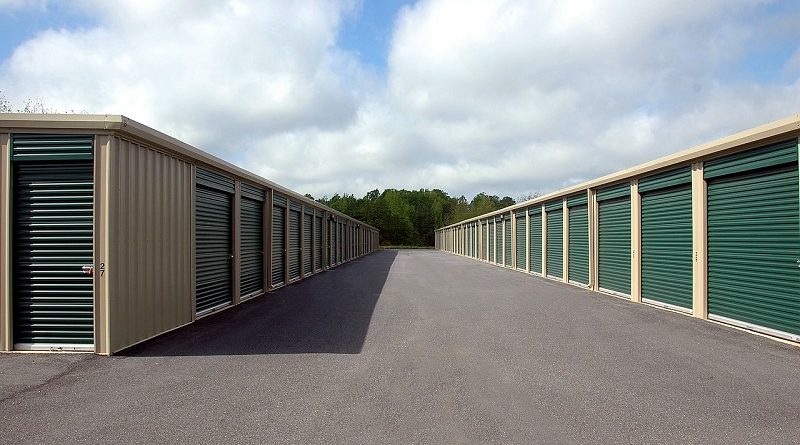How an Intelligent Warehouse Security System Ensures Inventory and Stock Safety
Introduction
Warehouses are to goods what home is to us – a place of security, warmth (or other temperature settings), and comfort. From storing food items to heavy machinery and equipment, warehousing facilities must be fully equipped to provide high-end technical support to optimize efficiency.
Warehouse security systems are integrated solutions that include edge devices for recording and analytics, cloud services for prolonged and secured data storage, and an app-based platform for real-time connectivity.
As a warehouse owner or supervisor, your priority has to be your inventory and stock safety. Whether you’re protecting it from the changing humidity of the season or the eager hands of miscreants, the stock in your storage is the most expensive and valuable asset. Your whole security mechanism is built around the idea of creating an impenetrable security net across your premise.
Even with insurance against all kinds of imaginable circumstances, losses incurred due to unsafe storage or theft attempts can affect an organization’s reputation. While insurance claims are one way of protecting your enterprise, preventive measures prove to be more helpful in such cases.
Warehouse security systems enable control over who enters and exits the premises, even keeping accurate records of the warehouse’s opening and closing time. With temperature and vibration control systems for the interior and night vision systems with perimeter intrusion detection for the exterior, an intelligent warehouse security system will protect your premises against numerous security threats.
Other than the possibility of external damage, the quality of stock can also degrade with time. Whether in correlation with the required temperature settings or shorter shelf life (as in perishables), managing stock movement and storage plays essential roles.
Just like any other business, you cannot optimize your operations by storing an excess of everything. You learn from the market trends, the demands of the people and then make the best choice. By keeping regular tabs on the products that come in for storage and their tentative dispatch dates via automatically updated records, warehouse owners can keep track of products’ demand and supply.
One has to remember that while technology has revolutionized warehouse security systems, some basic structural practices are essential to materialize the same. Fences and barbed wires around the premises, well-built walls of the building with minimal access points, strategic lighting, and other similar elements only aid in making warehouses more secure.
Warehousing needs that a surveillance system can fulfill
A warehouse security system is more than just a surveillance tool. With their various features and applications, these systems are portable assistants, ones you can carry in your pockets. With one end of the system installed on-premises and the other in your phone, it creates a network of constant updates and remote interactions.
- Manage obsolete inventory
Overestimating your capabilities or the demand for a particular product can lead to large quantities of goods at the end of their shelf life. Usually, products with a shorter life cycle should go through an equally short storage period in warehouses. To maintain the quality of the product, warehouses should prefer cross-docking these products. In the midst of what could be a chaotic transaction, warehouse security systems ensure the unfazed movement of products from one truck to another. The RFID and barcoding system enables employers to keep accurate records of items that have entered the warehouse or have been dispatched. This system supports a nonchaotic transfer of commodities, allowing products to reach the market before their life cycle ends.
- Employee productivity
How an employee deals with the new lot of products coming in, going out, or the existing stock also determines how well the unit functions. The warehouse surveillance system regulates employee performance, disables any possibility of pilferage and theft, and allows employers to monitor the employees’ activities in real-time. The platform user can view any footage they might want to review and even schedule monitoring for the daily adherence follow-up.
- Automated inventory control
Relying on pen and paper for cycle counting for stocktake and inventory logging is an outdated practice that is still in use. Numerous warehouse facilities still depend on manual tracking and cycle counting processes as a means of record-keeping.
However, this method is prone to data errors and inconsistencies over more extended periods. The displacement of these records or any incorrect transcription added to the log can lead to delays and processes’ inefficiency.
Warehouse security systems use asset and inventory tags for accurate stock counting and keeping transactional records of all products and goods dispatched.
- Temperature Control
Pre-defined temperature settings in a warehousing facility are essential to avoid spoilage of goods. With large warehouses storing a wide variety, some products need to be frozen to elongate their life cycle while others require different temperature settings.
Ambient Storage or Dry Warehouse: These warehouses do not require temperature control and store products at room temperature.
Cold Storage: Products stored in these warehouses require low-temperature settings for their sustainability over longer durations.
Refrigerated Warehouse: Like cold storage, these storage units maintain pre-defined temperature settings much lower than usual cold storage.
A warehouse security system ensures no deviations in each unit’s temperature settings and sends real-time notifications to escalations in case of discrepancies.
Besides monitoring the unit’s temperature, these solutions also keep the warehouse’s humidity levels under control.
- Round the clock video monitoring
Warehouses are vast, sprawling facilities that have to store large quantities of products during a specified period. To ensure real-time surveillance to ensure stock safety, the use of IP cameras and sensor-based monitoring becomes essential.
This system provides 100% visibility and transparency into the functions of the premises. The employees’ operations and their adherence to SOPs, safe and regulated storage of products, and scheduled reimbursement of stock levels protect the business against discrepancies.
The cameras installed inside the premises can be protected with tamper-proof casings (as in dome cameras) that send real-time alerts anytime it detects any unusual activity or presence. On the other hand, infrared cameras that allow visibility in low light settings are equipped to alert surveillance staff if they detect motion or presence, especially after working hours.
Conclusion
Stock protection is one of the most critical use cases for using an intelligent warehouse security system. Whether protecting it from external harm like intrusions and natural disasters or internal matters of pilferage or negligence, the installation of IP cameras and intelligent sensors supports efficient warehouse management.




